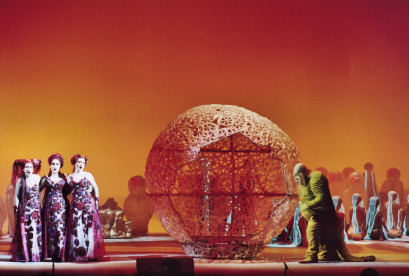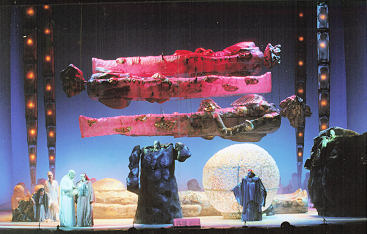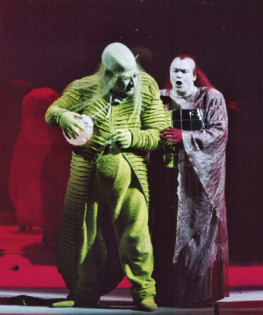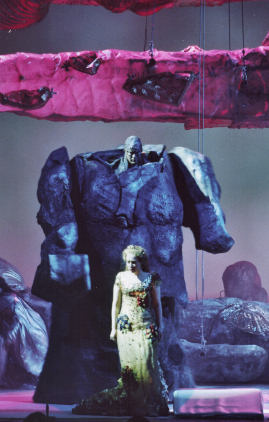|
Editorial Board
Melanie
Eskenazi
Webmaster: Len Mullenger
|
Seen and Heard Opera Review
The Mariinsky Ring in Cardiff - Das Rheingold : Soloists and Orchestra of the Mariinsky Theatre, Valery Gergiev (conductor) Wales Millennium Centre 30.11.2006 (BK)
Production Set Design: George Tsypin Costumes: Tatiana Noginova Staged by: Susanna
Tsiriouk
Nibelungs: Maria Benson,
Tizzie Birch-Hurst, Lucy Bond, Gwendolen Cartwright, Bethan
Davies, Lowri Herbert, Katie Mitchell, Alexandra Nickels,
Shannon O'Brien, Ceri Ann Parker, Abbie Pearson, Rebecca
Preddy, Katie Rowlands, Jennifer Son, Alexandra Smith,
Faye Wigmore.
Gods
and Giants The 'production concept' as the programme describes it, is a joint effort by George Tsypin and Valery Gergiev. After reading a book on myths from Ossetia, the area of the Caucasus from which Valery Gergiev comes originally, George Tsypin writes that he 'had this image of an amazing Ring which looks towards Asia, towards the Russian steppes. I had a sense of this ancient Russia - an almost archaic, barbaric percerption of that culture and I was very inspired... Wagner created something which it is really impossible to interpret and conquer within one neat concept.'
So he offers none.
Apart from thinking about his production as a 'Russian'
Ring, as an 'art installation with amazing music'
George Tsypin makes no other interpretation of the text.
The set is somehow 'mythic' and that is sufficient: the
huge figures appearing in all four parts of the tetralogy
may be giants or gods, he says, and there are four of
them simply as a device with which spaces can be shaped
or atmospheres created. The figures are 'silent witnesses
to this story' , he adds, sometimes 'doing nothing.. sometimes
reacting with subtle movements to the stage action to
indicate that they may have a cosmic' (and therefore different)
'perception of what is going on.'
What
the floating statues made of it is anybody's guess but
human reactions to this Rheingold will be mixed.
Some will complain that it offers nothing new, some will
be puzzled by its 'obscurity' and others (like myself)
will just have enjoyed the light show. The stage direction
is minimal but it doesn't lack good touches - there's
a convincing toad in Alberich's second transformation
and as the Gods enter Valhalla, they become multi-cultural
deities, suggested by their headgear with Wotan as Anubis,
the Egyptian dog-headed god. Asia may be nearer than we
think as the rest of the cycle unfolds.
Fasolt and Freia
Opinions will vary on the music too since there was a noticeable Mariinksy (or Gergiev) sound to both playing and singing. It's typically powerful, precise and colourful but close your eyes, forget that this is Wagner for a second and you could almost be listening to Mlada from time to time. No, that's an exaggeration of course, but to my inner ear, the playing lacked Wagnerian feeling and atmosphere rather too much of of the time. Perhaps Russia and Wagner really don't sit so easily together.
Similarly, while the
singers were all uniformly competent as might be expected
from this company - there were very few signs of vocal
difficulty anywhere and the production has some extremely
fine voices - it would be hard to maintain that much of
what was offered amounted to great Wagner singing
or characterisation. For the most part, it just sounded
heroic and fairly relentless, as if (once again) the soul
of both text and music was not quite being reached. Occasionally
it was, (from Edem Umerov's Alberich and Andrey Popov's
Mime especially) but hardly ever entirely so.
Bill Kenny
All pictures : © George Tsypin or Natasha Razina
Back to the Top Back to the Index Page |
| ||
|
||||






